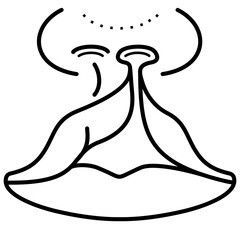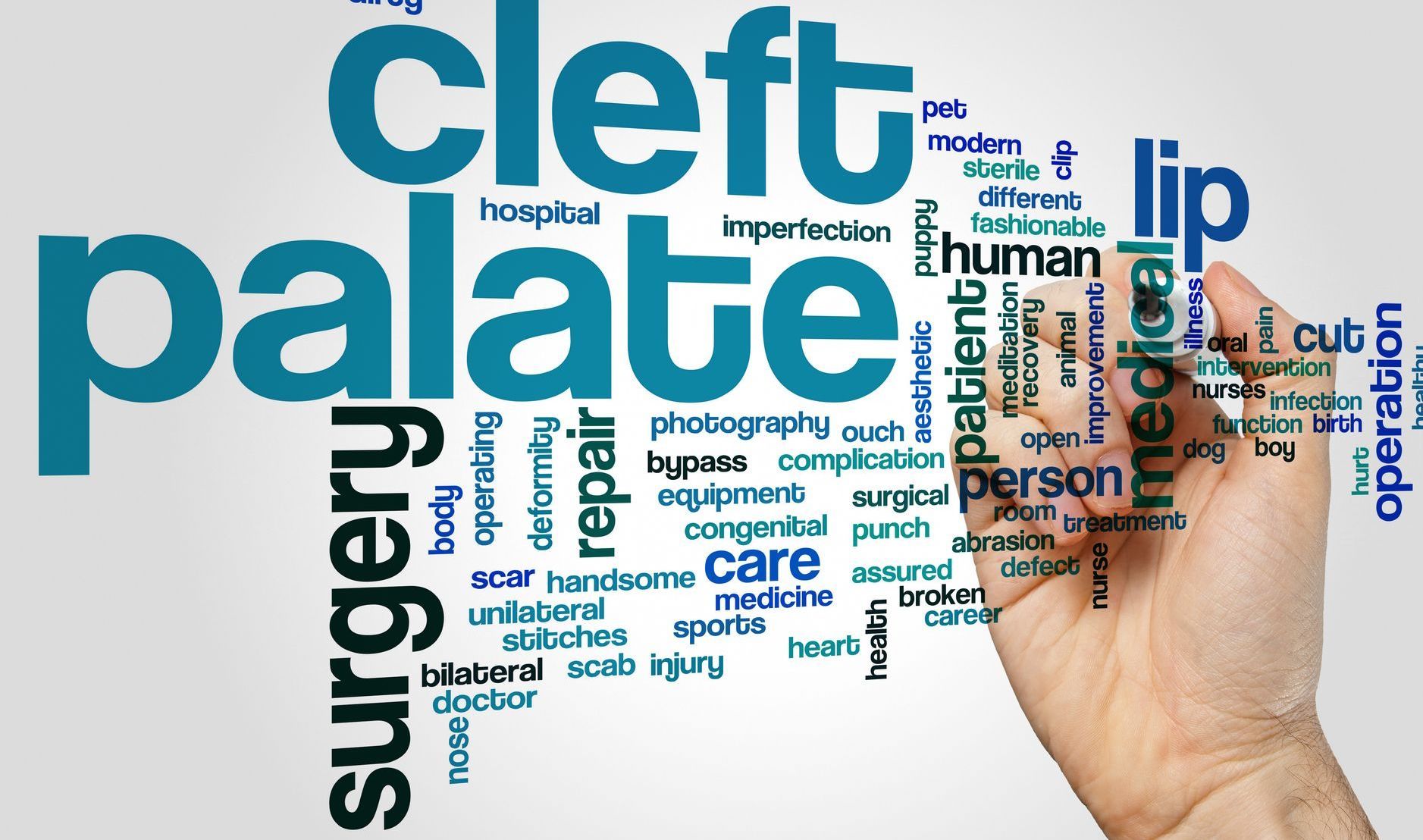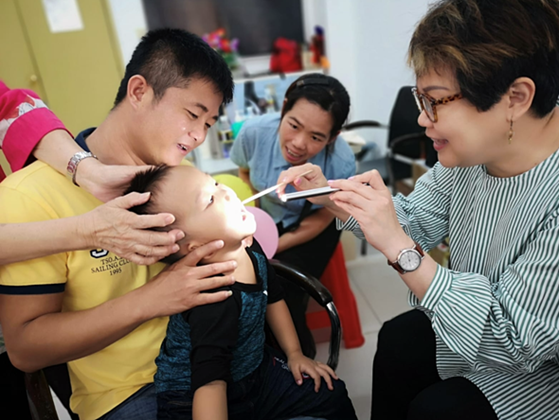What is Cleft lip and, or Cleft palate?
Cleft lip and palate are congenital conditions that happen when the tissues in the baby's face and mouth don't join properly during early pregnancy. Also known as orofacial cleft, it is the most common craniofacial condition worldwide regardless of race. A cleft lip happens when the upper lip, including the bones of the upper jaw and gum, doesn't fuse correctly on both sides. On the other hand, a cleft palate is characterized by an opening in the roof of the mouth due to incomplete fusion while developing inside the womb. This separation in either or both areas can present various challenges for your child such as difficulties with eating, speaking, or even breathing normally. While these conditions can occur independently from each other, they may also be associated with other syndromes or medical issues.
Causes of Cleft Lip and Cleft Palate
The exact causes of cleft lip and cleft palate remain largely unknown. However, medical professionals believe that genetic and environmental factors play significant roles in their development.
Effects of Cleft-Craniofacial Conditions
People born with a cleft palate often face difficulties when it comes to speech and feeding as the connection between the mouth and nose is altered. Infants who have a cleft palate may struggle to generate enough suction for breastfeeding or bottle-feeding.
Is Cleft-Palate Surgery Necessary?
We understand that receiving information about your child's cleft lip and palate condition can feel overwhelming, and you may have concerns regarding the necessity of surgical intervention. We want to assure you that undergoing surgery for cleft lip and palate is crucial for your child's well-being and overall quality of life. The separation in the lips and/or palate can present several challenges for your child, impacting their ability to eat, speak, and even breathe properly.
The treatment approach for individuals with a cleft varies depending on the severity of the condition. It may involve one or multiple surgeries aimed at repairing and restoring both functional abilities (such as eating) as well as cosmetic appearance of the affected areas. In some cases, additional interventions such as speech therapy or cleft and lip palate orthodontics (cleft-craniofacial orthodontist) specifically tailored for cleft lip and palate patients might be necessary to assist them in achieving optimal outcomes. Our primary goal is helping your child attain normalcy to the greatest extent possible by providing comprehensive care.
Deciding to move forward with cleft lip and palate surgery can be difficult, yet it is an essential measure in safeguarding your child's complete well-being, growth, and contentment. Rest assured that progress in medical advancements and the provision of comprehensive care by a multidisciplinary team will present your child with optimal opportunities for a fulfilling and rewarding future.
The Importance of an Interdisciplinary Team in Craniofacial Surgery
It is essential to bear in mind that cleft lip and palate surgery is typically conducted by a skilled team of healthcare experts who specialize in craniofacial surgery. The surgical approach is customized for each individual child, taking into consideration their specific requirements, and may involve multiple procedures carried out over time to achieve the best possible outcomes. The optimal treatment for conditions related to Craniofacial and Cleft lip and palate necessitates a dedicated interdisciplinary team consisting of various specialized professionals such as cleft lip and palate orthodontists (or Craniofacial Orthodontists) , plastic surgeons, ENT specialists, Paediatricians, oral maxillofacial surgeons, Geneticists, Speech therapists, Psychologists along with other allied health professionals working together.
When Should a Baby Have Their First Cleft Surgery?
The ideal timing for the initial surgical repair of a cleft depends on various factors specific to each individual child and is determined by the medical team. Typically, surgery to correct a cleft lip is performed when the baby reaches approximately 3 to 6 months of age. However, this timeline can differ depending on factors such as the overall health, weight, and specific anatomical considerations of the baby. On the other hand, surgery for cleft palate repair is usually scheduled around 9 to 18 months old or even earlier if recommended by the medical team. It should be noted that early intervention plays a crucial role in addressing feeding difficulties, and speech impairments, and promoting optimal development while enhancing general well-being.
Most Up-to-Date Cleft Lip and Palate Management: The treatment of cleft lip and palate has made great progress in recent years due to advancements in medical technology and interdisciplinary care. A multidisciplinary team comprised of various healthcare professionals, such as plastic surgeons, oral maxillofacial surgeons, speech therapists, craniofacial orthodontists, nurses, and other allied health experts work together to provide comprehensive care for individuals with cleft lip and palate. This collaborative approach ensures that every child receives tailored treatment plans from infancy all the way through adolescence based on their specific needs.
Presurgical Preparation: In order to prepare for cleft lip and palate surgery, it is essential to have thorough preparation. The medical team will thoroughly evaluate the baby's overall health condition, anatomy, and nutritional status before proceeding with the surgery. This assessment plays a crucial role in determining the most suitable timing for the procedure and ensures that the baby is in optimal condition for a successful outcome. Furthermore, parents will receive guidance and assistance to fully understand each step of the surgical process as well as postoperative care requirements. They will also be informed about any possible challenges that may arise during this period.
Nursing and Feeding:
Infants with cleft lip and palate may encounter challenges in breastfeeding and eating as a result of the gap in their lip or palate. Adequate support for nursing and feeding is an essential component of the treatment strategy for cleft conditions. Lactation experts, along with specialized nurses, collaborate closely with parents to provide guidance on appropriate feeding methods, such as using specially designed bottles and nipples tailored to meet the specific requirements of these infants. It is crucial to ensure that babies receive sufficient nutrition and achieve optimal weight gain prior to undergoing surgery in order to promote overall well-being while minimizing surgical complications.
Naso-Alveolar Molding (NAM) for Infants and its Advantages
Naso-alveolar molding (NAM) is a cutting-edge technique utilized by specialized cleft and lip palate orthodontists to treat infants born with both cleft lip and palate. NAM involves the use of personalized oral devices and gentle pressure to reshape the nasal cartilage, lip, and gum prior to surgical intervention. The main objective of NAM is to reposition the segments affected by the cleft deformity, which leads to better outcomes after surgery while minimizing the need for more extensive procedures later on. By manipulating tissue at an early stage in life, NAM can promote a more natural and balanced appearance that enhances not only aesthetics but also functional abilities.
Dr. Catherine Lee received her specialist orthodontic training at the New York University and her craniofacial orthodontic sub-speciality training at New York University Institute of Reconstructive Plastic Surgery (IRPS) at the NYU School of Medicine, an institution that has pioneered many surgical and treatment techniques. Dr. Catherine is one of the few orthodontists in US to have completed an American Dental Association accredited craniofacial orthodontic fellowship program. As a fellow of craniofacial orthodontics, Dr Catherine Lee has worked with the U.S. team that pioneered the innovative Naso-alveolar molding technique (NAM). (link to NAM paper published) and Distraction Osteogenesis of the craniofacial skeleton. As a qualified cleft-craniofacial orthodontist, along with her surgical teams in Singapore and Malaysia.
As a member of the cleft and craniofacial teams in Singapore and Malaysia, Dr Catherine Lee helps treat patients born with a variety of facial abnormalities including, cleft lip and palate, hemifacial microsomia, Crouzon Syndrome, Pierre Robin, and a variety of other abnormalities. Treating these patients in a team-centered approach allows optimal treatment results as professionals from plastic surgery, speech pathology, orthodontics, pediatric dentistry, otolaryngology, and several other specialties can coordinate and optimize each step of treatment.
Dr. Catherine Lee begins to work with patients born with cleft lip and palate as early as one week of age. In conjunction with the other specialists on the cleft and craniofacial team, Dr. Catherine is able to manage the orthodontic needs of patients born with craniofacial abnormalities from the time of birth up through adulthood.
To summarize, significant advancements have been made in the management of cleft lip and palate treatment. Early intervention, collaborative care, and innovative approaches such as naso-alveolar molding have played a crucial role in achieving positive outcomes for affected individuals.
By ensuring timely surgical interventions and receiving comprehensive support from healthcare professionals, children born with cleft lip and palate can reach their full potential and live rewarding lives.
Parents can be reassured that their child's well-being is entrusted to a committed medical team equipped with the necessary expertise. Should you have any questions or concerns regarding cleft lip surgery or your child's condition, our orthodontic clinic in Singapore is available to provide guidance throughout this process. Remember that your love and support are pivotal factors in assisting your child on this journey towards leading an enriching life.














